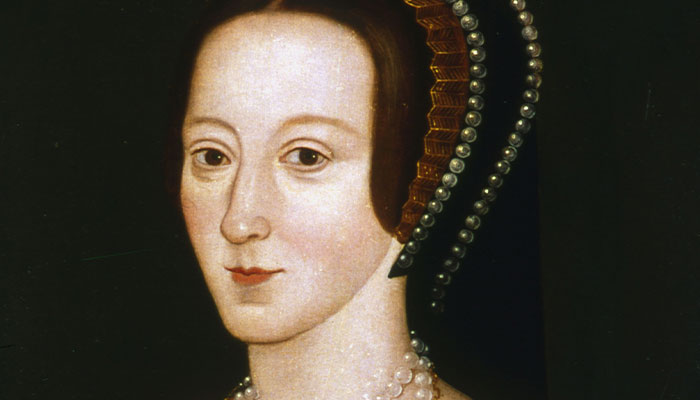Warning: spoilers! There has been equal parts excitement and trepidation in the lead-up to the publication of Margaret Atwood’s The Testaments, the sequel to her 1985 novel The Handmaid’s Tale.

Red: Elizabeth Moss, who starred in the TV version of Atwood's The Handmaid's Tale, wore robes that have come to symbolise feminist resistancee across the world. Image credit: SBS
That novel has had an extraordinary afterlife, generating films, plays, operas and, in 2017, a hit tv show starring Elisabeth Moss as Offred. The Handmaid’s Tale seemed to be becoming somehow more relevant over time, not less; a sign held at the Women’s March in the United States in January 2017 read “Make Margaret Atwood Fiction Again”. The red robes of the Handmaids have become a symbol of feminist resistance across the world. How, then, could Atwood match her earlier achievement?
While The Handmaid’s Tale was a slow-building horror novel, The Testaments has the pace and drive of a thriller.
It is pleasing to be able to report that The Testaments is a worthy successor to The Handmaid’s Tale, building and enriching Atwood’s portrait of a near-future dystopian theocracy in which women are forced into sexual slavery. While The Handmaid’s Tale was a slow-building horror novel, The Testaments has the pace and drive of a thriller. While The Handmaid’s Tale is about Gilead at the zenith of its power, The Testaments is about how totalitarian states fall. Margaret Atwood has always pointed out that nothing in the world of The Handmaid’s Tale has been made up, and so too does The Testaments cleave closely to women’s actual experiences. A young girl, for example, retreats from the world because of an experience of sexual violence that she does not disclose because she knows nobody will believe her. This world is all too real.
What would you do?
The Testaments is told by three unreliable narrators: a Canadian teenager, a Gileadean teenager, and Aunt Lydia, by far the novel’s most captivating character. Of course, we have met Aunt Lydia in The Handmaid’s Tale, but while there we see her only through Offred’s eyes as a figure of menace, here Atwood gives us a considerably richer portrait. Aunt Lydia, a former family court judge, takes us back to the rise of Gilead to show us how she came to occupy a position of considerable power in Gilead.
Aunt Lydia knows that knowledge is power, and has been steadily accruing information that she plans to use to destroy Gilead from within. One might argue that making Aunt Lydia “good” is selling out on The Handmaid’s Tale’s insistence that patriarchal power is propped up through the complicity of women, but Atwood is much smarter than that.
Aunt Lydia knows that she is complicit in the horrors of Gilead, and we see her making ruthless choices throughout the novel, even as it becomes clear that she is the source for the May Day operatives in Canada. Atwood has always been adept at representing older women, and Aunt Lydia’s narrative voice is wry, chilling, compelling and even, at times, funny, even while Atwood does not shy away from Aunt Lydia’s more unsavoury characteristics. One of the most chilling moments of the novel is when Aunt Lydia, deprived of food for days in captivity, confesses to enjoying an egg sandwich shortly after she is forced to witness the execution of a group of women. What, she asks us, would you do in her situation?

All too real: Author Margaret Atwood has famously said that nothing in the world of her original story was made up and The Testaments continues that theme, says Russo.
The only narrative voice that perhaps does not work as well is that of the Canadian teenager Daisy. Daisy has grown up in a world that looks rather like our own, and must grapple with finding out her own connection to Gilead. However, the fact that Daisy’s story is largely set in a recognisable Canada means that we must move away from the disturbingly compelling world of Gilead. Atwood has so thoroughly built the world of Gilead, with its Marthas, Wives, Handmaids and Econowives, that it is strange to find ordinary life going on elsewhere.
Agnes Jemima, who has been raised in Gilead but becomes increasingly discontented with her life, is another strong choice for narrator. As Agnes points out, life in Gilead is not always unremittingly bleak, and the connections she builds with her adopted mother, Tabitha, as well as the Marthas and her friend Becka, are genuinely loving and well-realised. However, it is within Agnes’s story that Atwood allows us to see that life for even the most privileged girls and women of Gilead is nothing short of horrific, and characterised by unremitting physical and sexual violence.
Discover what happens to Offred
The Testaments does pick up on elements from the Hulu television adaptation. Baby Nicole, a key character from the show, is a major element of the novel, although the details around her escape from Gilead are somewhat different. Atwood also gives readers what they have always wanted: an answer (of sorts) to the question of what happens to Offred. Atwood assumes familiarity with The Handmaid’s Tale, and it would be difficult to read The Testaments as a standalone narrative. The real identities of both Daisy and Agnes become increasingly clear for those familiar with both The Handmaid’s Tale and the television series, and piecing all this information together gives the book the suspense and payoff of a mystery.
- Building digital wisdom: how to spot unreliable websites
- HSC students don't delay: how to beat procrastination right now
Most of the action of the novel takes place within the walls of Ardua Hall, the residence of the Aunts. Ardua Hall is the only place in Gilead where women are able to read, and it houses the Hildegard Library (a nod to the medieval abbess Hildegard of Bingen), where forbidden novels are kept. Books, words and reading are a major concern in this novel, as they were in The Handmaid’s Tale. Ardua Hall, like a medieval abbey, is the one place where women can have access to knowledge and information, and so it is not surprising that young girls wishing to escape a distasteful marriage see becoming an Aunt as an attractive option.
More importantly, however, Ardua Hall is a way for women to bear testament to the reality of their lives. This novel is one that allows three women to tell their own stories to place alongside that of Offred in the first novel. Information is passed between and among women in the quiet spaces of Ardua Hall. Knowledge is a weapon and a tool. As Aunt Lydia points out, “Pen is envy”. In a world of fake news and “alternative facts,” the most comforting thing about The Testaments is that Gilead is destroyed by the power of information, carried in a secret chip inside a girl’s arm.
Season 3 of the Handmaid's Tale is now available now on SBS On Demand.



